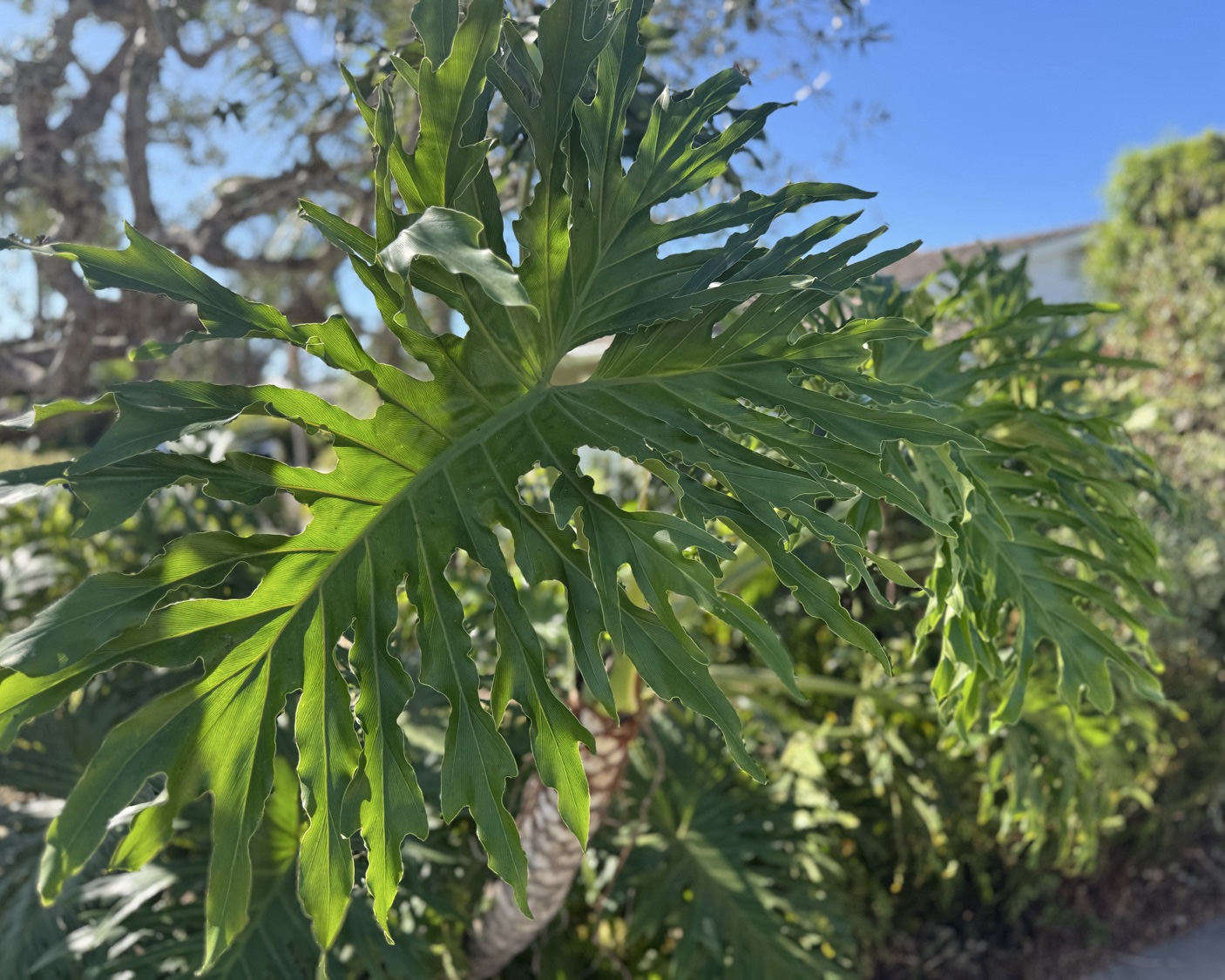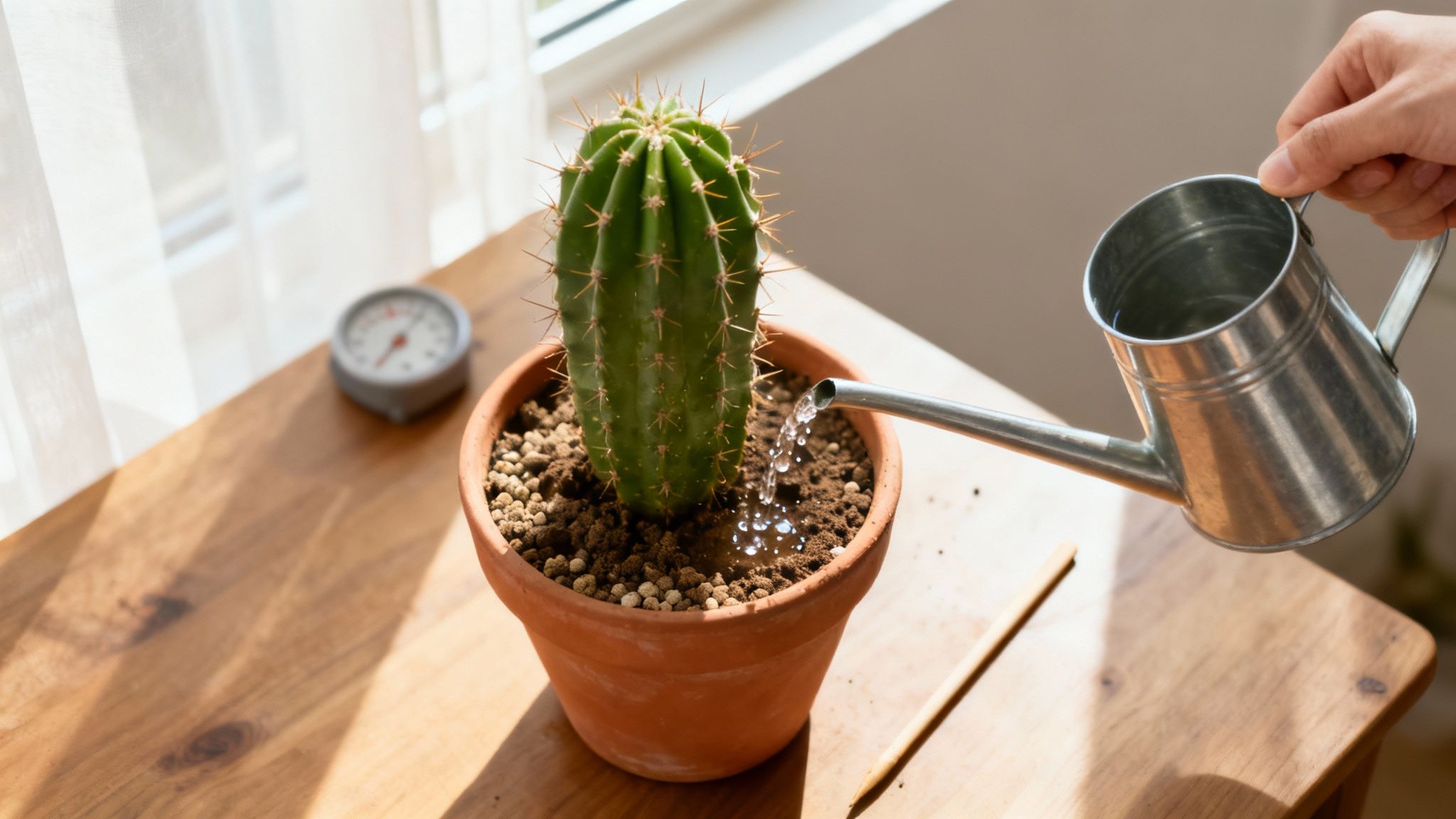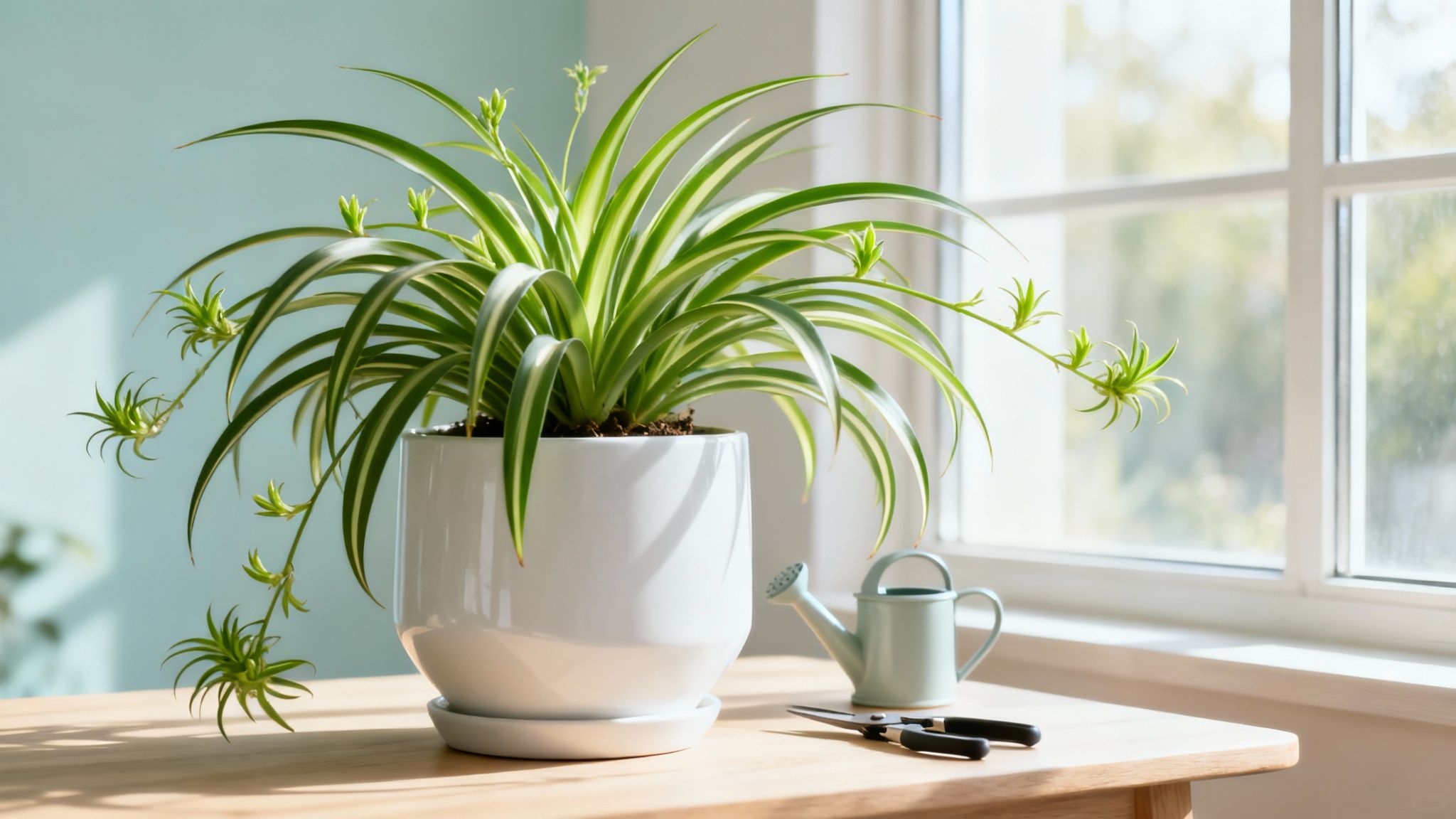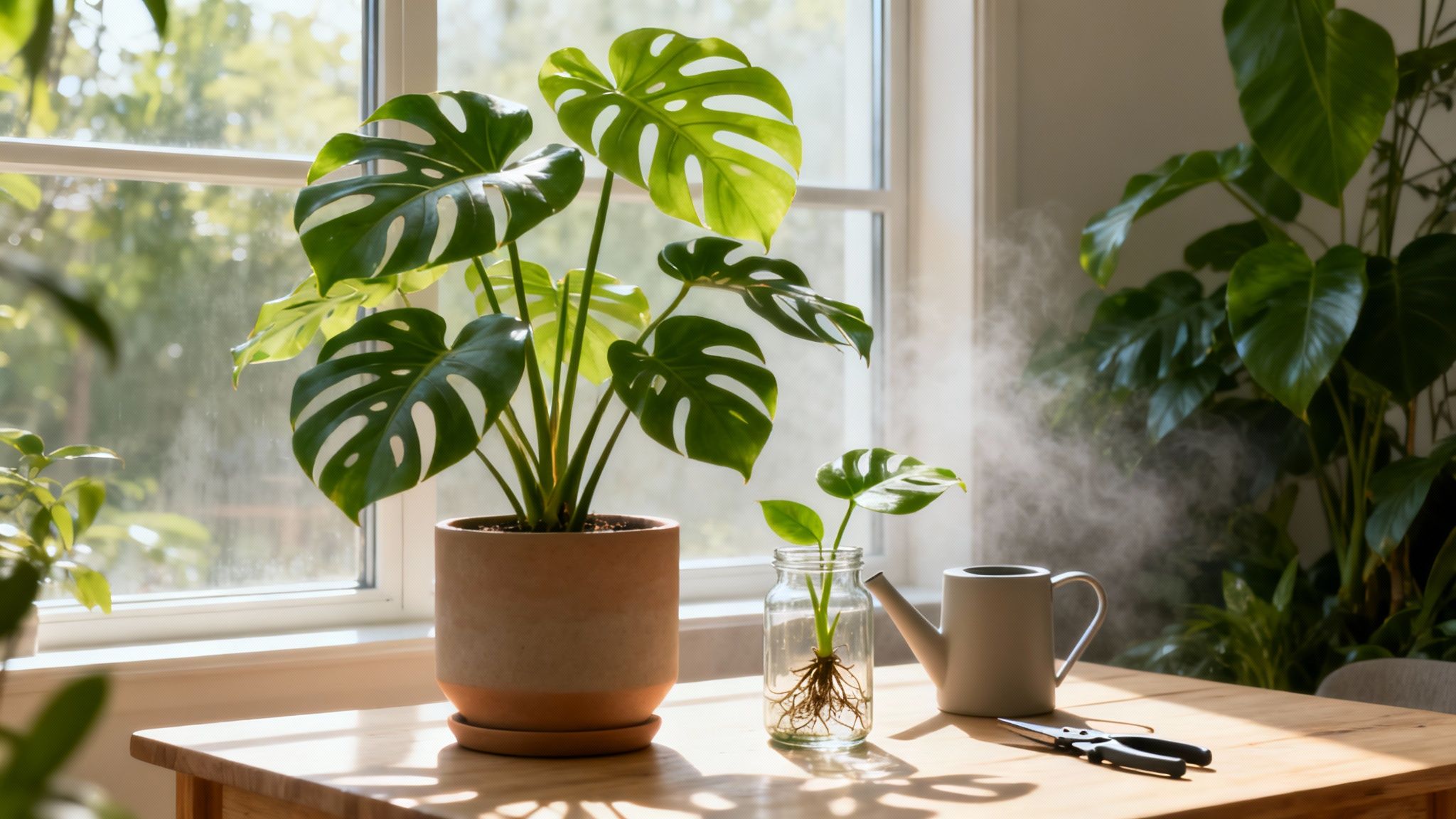Is there anything more frustrating than seeing your thriving, green plant suddenly develop mysterious yellow spots, a weird powdery film, or sad, drooping leaves? For gardeners, it’s a universal moment of panic. You've poured your time and care into your plants, and now something is clearly wrong. This guide is your first step to becoming a plant detective, helping you learn how to identify plant diseases with confidence. You'll move from worrying to taking decisive, effective action. We’ll walk through a head-to-root inspection checklist, decode common visual symptoms, and show you how to leverage both technology and community wisdom to get your plants back on the path to health.
What Are the First Signs of Plant Disease?
The first clues are often subtle. You might spot a single yellow leaf on your otherwise perfect Swiss cheese plant (Monstera deliciosa) or notice a strange powdery film on your zucchini (Cucurbita pepo) leaves after a humid spell. Before jumping to conclusions, it's crucial to determine if you're dealing with a genuine disease or just a normal part of the plant's life cycle.
Not every yellow leaf signals impending doom. Fun fact: older, lower leaves often turn yellow and fall off as a plant directs energy to new growth—a process called senescence, which is perfectly normal. However, when discoloration appears on new growth or forms a distinct pattern, it’s time to pay closer attention. The key is to gather all the clues you can before you act. For a tricky diagnosis, a tool like Tendra's AI Disease Diagnosis can be your best friend, offering a fast and accurate second opinion with over 95% accuracy right from your phone.
Your Head-to-Root Inspection Checklist
A quick glance won’t cut it. To accurately identify a plant disease, you need to be thorough and systematic.
Leaves (Top and Bottom): Get up close. Look for spots, powdery mildew, rust-colored patches, or yellowing between the veins (interveinal chlorosis). Don't forget to flip the leaves over—many pests and fungal spores love to hide on the underside.
Stems and Branches: Scan for dark, sunken areas (cankers), unusual growths (galls), or any discolored streaks running up the stem.
Flowers and Buds: Are buds failing to open? Do they look misshapen? Fuzzy mold, like botrytis blight, is a major red flag, especially on flowering plants.
Roots and Soil Line: Gently probe the base of the plant. A mushy stem or visible fungus is a bad sign. If the soil has a sour, unpleasant odor, you could be dealing with root rot.
This initial observation is your foundation. The more details you note, the better your chances of nailing the diagnosis. Want to sharpen your observation skills? Check out our guides on plant identification and care.
Practical Tip: Take clear photos of each symptom as you find it. This creates a visual record that is invaluable for tracking the issue or getting help from AI or community members.
Quick Symptom Checker: Common Signs and Potential Causes
Sometimes you just need a quick reference to point you in the right direction. This table breaks down common symptoms and their potential causes, helping you narrow down the possibilities.
Symptom | What It Looks Like | Could Be Fungal/Bacterial | Could Be Pest-Related | Could Be Environmental/Nutrient Issue |
|---|---|---|---|---|
Yellow Leaves | Uniform yellowing, spotted, or yellowing between veins. | Leaf spot diseases, blights. | Spider mites, aphids sucking sap. | Nitrogen deficiency, overwatering, lack of light. |
Brown Spots | Dry, crispy spots or soft, mushy ones. | Anthracnose, bacterial leaf spot. | Scale insects, thrips damage. | Sunburn, frost damage. |
White Powder | A dusty, flour-like coating on leaves and stems. | Powdery mildew. | Mealybugs, whiteflies. | High humidity with poor air circulation. |
Wilting | Drooping leaves and stems, even when soil is moist. | Root rot, fusarium wilt, verticillium wilt. | Root-feeding nematodes, severe aphid infestation. | Underwatering, extreme heat, transplant shock. |
Stunted Growth | Plant is smaller than expected, with few new leaves. | Viral infections, root diseases. | Root aphids, scale insects draining resources. | Compacted soil, nutrient deficiency, incorrect pH. |
Holes in Leaves | Chewed edges or holes in the middle of leaves. | Not typically a disease symptom. | Caterpillars, slugs, snails, beetles. | Hail damage. |
Think of this table as your initial diagnostic guide. Once you've matched a symptom, you can dig deeper into that category to confirm the true culprit.
Understanding the Common Culprits
Most plant problems boil down to one of three culprits: a fungal, bacterial, or viral infection. Fungi are, by far, the most common issue home gardeners face, especially when conditions are damp and humid.
Decoding Your Plant’s Visual Symptoms
Learning to be a plant diagnostician starts with knowing what to look for. Your plants communicate through visual cues; once you learn their language, you'll see beyond "yellow leaves" and start noticing the subtle details that reveal the real problem.
Where the symptom appears, its pattern, and even its texture are often more revealing than the symptom itself. For instance, consistent yellowing on older, lower leaves might indicate a simple nitrogen deficiency. But if you see a mottled, mosaic-like yellow pattern on new growth, you could be dealing with a virus. These nuances are everything when learning how to identify plant diseases correctly.
Common Symptom Categories
Let's break down the most common signs your plants will give you. Familiarizing yourself with these patterns will help you narrow down the possibilities and get closer to the right solution.
Leaf Spots and Lesions: These are probably the most frequent signs. Think of the classic fuzzy white patches of powdery mildew on squash leaves or the unmistakable dark circles of black spot on a rose (Rosa) bush. The color, shape (circular vs. irregular), and presence of a colored border all provide critical clues.
Wilting and Drooping: While underwatering is the first suspect, a plant that remains wilted after a thorough watering is a major red flag. This usually points to a problem below the surface, like fungal wilts (Fusarium or Verticillium) or root rot, which attack the plant's vascular system and prevent water uptake.
Discoloration (Chlorosis and Necrosis): Chlorosis is the technical term for the yellowing of leaf tissue due to a lack of chlorophyll, often a sign of a nutrient deficiency. Necrosis, on the other hand, is when the tissue dies, turning brown or black. Noting where these symptoms start—on old leaves versus new growth—is key to solving the puzzle.
Growth Deformities: Any strange, unusual growth is almost always a sign of a deeper issue. This can range from curled leaves (like peach leaf curl), strange swellings on stems or leaves known as galls, or even a "witches' broom" effect, where a dense cluster of shoots grows from a single point.
Practical Tip: Don't forget to flip the leaves and check the undersides. Also, inspect the base of the stem right where it meets the soil. Pests and the very first signs of fungal diseases love to hide in these spots, and early detection can make all the difference.
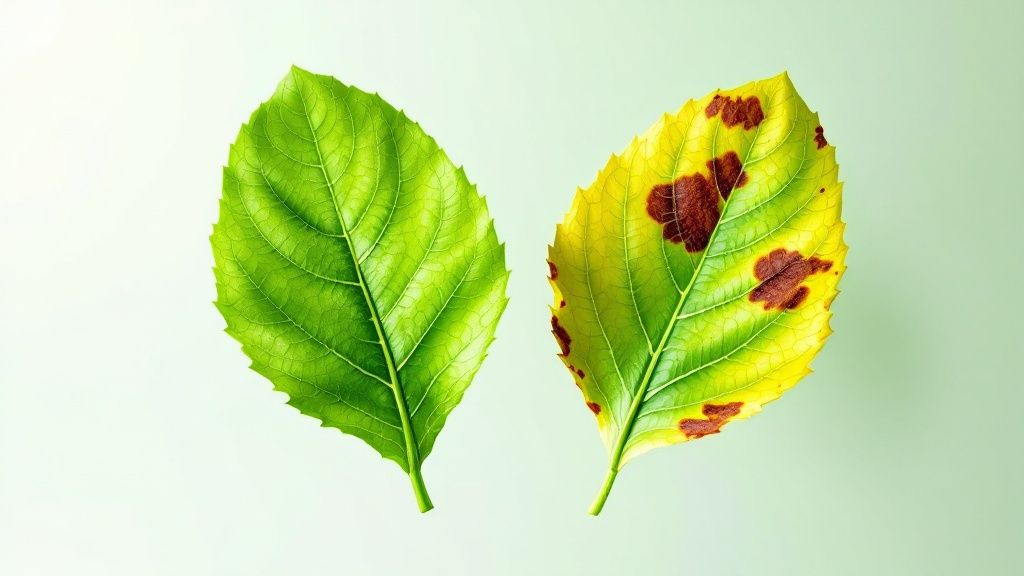
Putting the Clues Together
A single symptom can be misleading, but a pattern of symptoms tells a story.
Problem-Solution Scenario: You notice your tomato plant's leaves are yellowing, but they're also wilting, and the base of the stem feels soft and mushy. A single symptom might point to a nutrient issue or underwatering, but the combination strongly suggests root rot. The solution isn't more water—it's less. You'll need to let the soil dry out, ensure proper drainage, and possibly repot into fresh, well-draining soil.
Your goal is to become a detective and build a complete health profile of your plant. By methodically observing and categorizing these visual signs, you're gathering the evidence needed for a confident diagnosis. For tough cases, explore our community-sourced guides on common plant diseases to connect the dots.
Using AI for an Accurate Plant Disease Diagnosis
While your eyes are your best first tool, you don’t have to go it alone. Modern tech puts a powerful plant pathologist in your pocket, turning your smartphone into an impressive diagnostic tool. Think of it as a fast, accurate second opinion to guide your treatment plan.
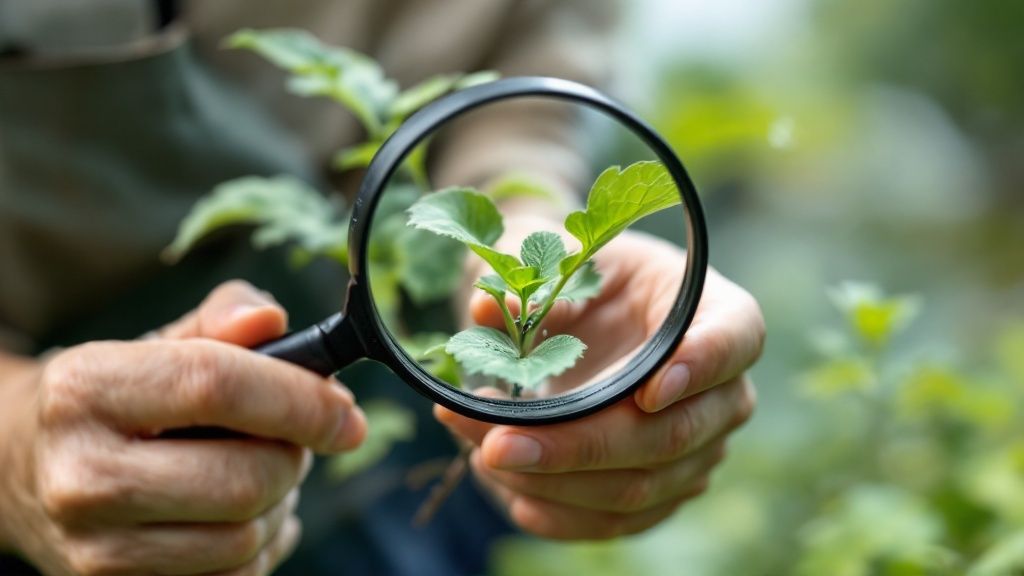
Taking the Perfect Photo for AI Analysis
The secret to a great AI diagnosis? A great photo. Clear information leads to an accurate analysis.
Here are three tips for capturing the perfect shot:
Use Good, Natural Light: Snap photos in bright, indirect light. An overcast day is perfect. Avoid harsh midday shadows or dim indoor lighting.
Focus on the Symptoms: Get close to the problem area—a spot on a leaf, a canker on a stem—and ensure it's sharp and in focus.
Provide Context: Take a close-up of the symptom, another of the entire affected leaf, and a final shot of the whole plant. This gives the AI crucial information about the disease's progression.
Practical Tip: Place a plain piece of white paper or cardboard behind a leaf to isolate it from a busy background. This forces the AI to focus solely on the plant’s symptoms.
With clear photos, Tendra's AI Disease Diagnosis feature gets to work. Upload your images, and the system cross-references them against a massive database. In seconds, it provides a high-accuracy diagnosis, a confidence score, and an actionable plan with Integrated Pest Management (IPM) treatment options. This kind of intelligent tool, especially when paired with a great plant identification app, is a true game-changer.
Real-World Application: Tapping Into Local Wisdom
An AI diagnosis gives you a powerful head start, but sometimes the best advice comes from a neighbor who has already battled the exact same problem. Tapping into the collective wisdom of your local gardening community is the key to not just identifying a disease, but actually fixing it.
Here’s a scenario: Sarah, a gardener in Portland, notices her prized tomatoes (Solanum lycopersicum) are developing the tell-tale spots of early blight—a common headache in the damp Pacific Northwest. Generic advice from a blog isn't helping. Instead of falling down another internet rabbit hole, she uses Tendra's Twin Plant Mates feature. She instantly connects with another tomato grower just a few miles away. He shares the exact organic fungicide that works for him in their shared climate and offers a crucial tip: prune the lower leaves to improve airflow, a small detail that makes all the difference in preventing fungal spread in Portland's humid weather. That's the power of hyper-local, field-tested solutions you just can't find anywhere else. This is what Tendra is all about: Connect. Grow. Share.
Building a Proactive Plant Health Plan
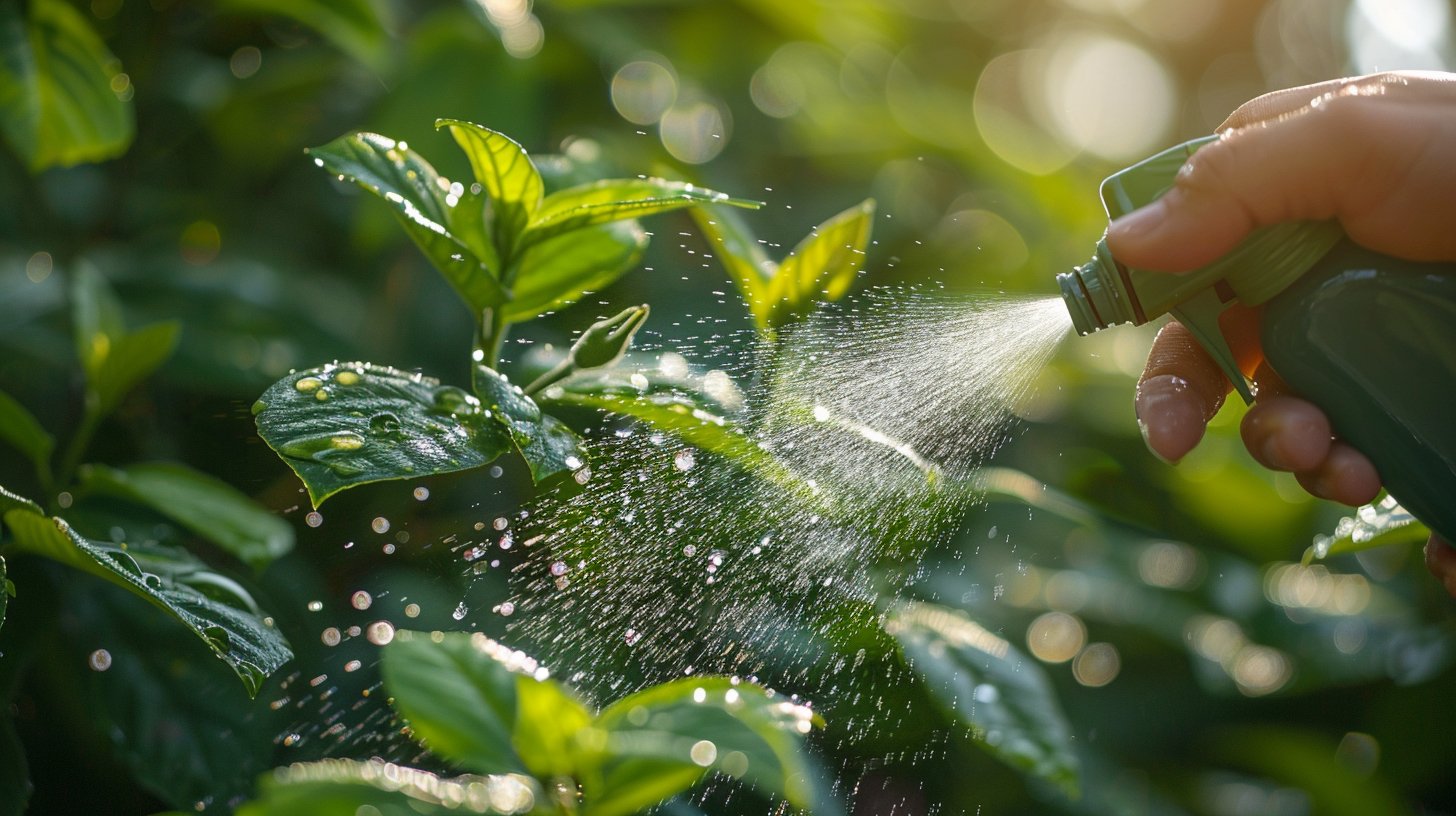
Identifying diseases is a valuable skill, but the ultimate goal is a garden so healthy that diseases rarely take hold. Shifting from a reactive mindset ("What's that spot?") to a proactive one is about building an environment where your plants thrive. This approach, known as Integrated Pest Management (IPM), prioritizes prevention first.
Here's how you can start right now:
Improve Airflow: Ensure each plant has adequate space according to its mature size to allow proper air circulation. This helps leaves dry quickly, reducing the moisture fungi require.
Water Smart: Focus on watering the soil rather than the leaves, using a soaker hose or watering wand. Water in the morning to allow splashes to dry before night. Allow the top inch or two (2.5-5 cm) of soil to dry between waterings to avoid root rot.
Clean Your Tools: Regularly disinfect pruners and trowels with a 10% bleach solution or rubbing alcohol, particularly after handling a diseased plant, to prevent spreading pathogens.
Selecting plant varieties with natural resistance to local diseases is also crucial. For instance, choose tomato cultivars marked with "V," "F," or "N" for resistance to Verticillium wilt, Fusarium wilt, or nematodes. Tendra’s cultivar databases provide detailed resilience information, offering a significant advantage.
Powdery Mildew
To manage powdery mildew, chemical fungicides can be effective, but the best treatment for severe infections involves using oil and baking soda. Using "All Seasons Oil" concentrate, mix 4 tablespoons of oil and 1 tablespoon of baking soda in 1 gallon of water. Thoroughly mix and spray on the affected areas. If using the Ready-to-Use quart, add 3/4 teaspoon of baking soda. Shake the container before each use. The oil acts on contact with powdery mildew while the baking soda prevents reinfection for several days. Apply weekly for effective control, avoiding wet or misty conditions or temperatures above 90°F.
Conclusion: Diagnose with Confidence
Learning how to identify plant diseases transforms you from a worried plant parent into an empowered, confident gardener. By combining careful observation with powerful AI tools and the invaluable wisdom of your local gardening community, you can tackle any issue that comes your way. It starts with a close look, from leaf to root, to gather clues. Then, leverage technology for a fast, accurate diagnosis and connect with fellow growers for solutions that are proven to work in your specific climate. This integrated approach not only saves your plants but also builds your skills and connects you to a network of passionate gardeners.
Ready to stop guessing and start diagnosing? Discover Tendra's AI Disease Diagnosis—where local gardeners connect and thrive.
Connect with local gardeners who've solved this exact problem

